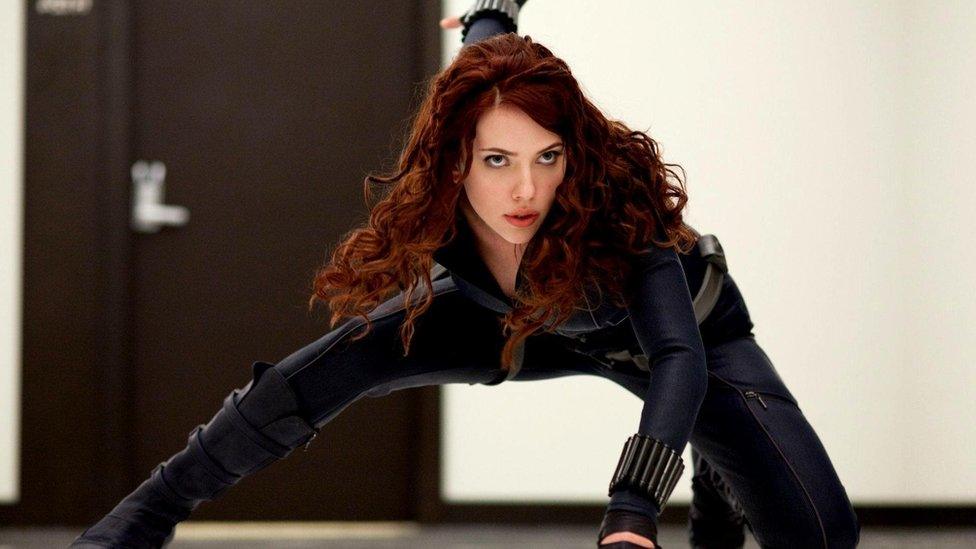Star Wars' Abrams leads move from CGI to reality
- Published
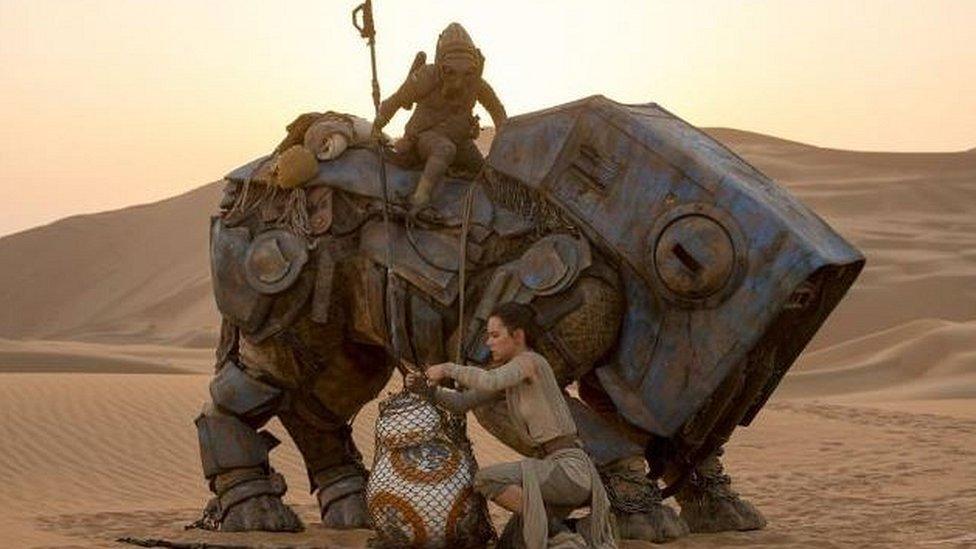
Star Wars: The Force Awakens involved a lot of work making models and sets from scratch
Every so often, Hollywood has a bete noire. Over the years, it's been talkies, piracy, the video cassette industry and right now, in some quarters, it appears to be computer-generated imagery (CGI).
That logic may fly in the face of the box office takings of Avengers: Age of Ultron (£924m) and Jurassic World (more than £1bn). Yet, the case for trying alternatives alongside CGI, has been made by both JJ Abrams, the director of Star Wars: The Force Awakens and Rian Johnson, director of its sequel.
"Wherever possible, whenever possible, we tried to do things as much in camera as we could," Abrams told AP, external.
"That meant that a lot of artists... were building things, not with pixels, but with wood and paint and foam, and actually constructing sets that we could have done in post [production with CGI].
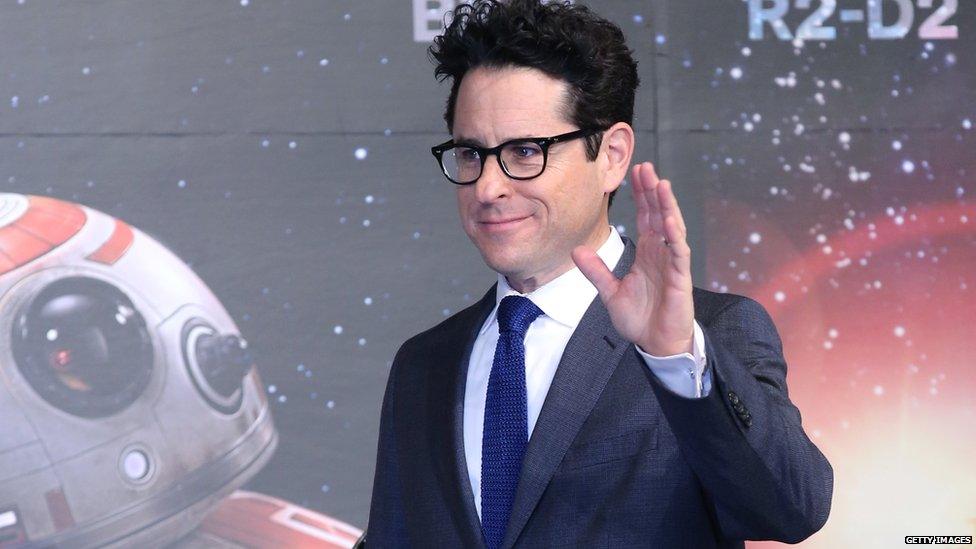
JJ Abrams says he feels less stressed when using the real thing rather than computer graphics
"It gave the actors the actual location, the actual sunlight or stage light - something to bounce off, and [gave] the movie a feeling of being in an actual location, not an artificial one."
"It was really nice to not have to also worry about 'will that ship look good on camera?' because we actually had it, we were actually filming it."
Johnson and Abrams have an ally in Roger Deakins, the 11-time Oscar-nominated director of photography behind the camera of the natural landscapes of No Country for Old Men and Skyfall.
"I think that trend would be a good thing. I like the look and feel of models," Deakins told the BBC.
Ben Falk, film-writer and biographer of Robert Downey Jr, agrees: "In a cinematic world dominated by superheroes and alien beings, I think that a lot of film-makers now are realising that it needs to feel tangible. A puppet Yoda is always going to be better than a CGI Yoda."
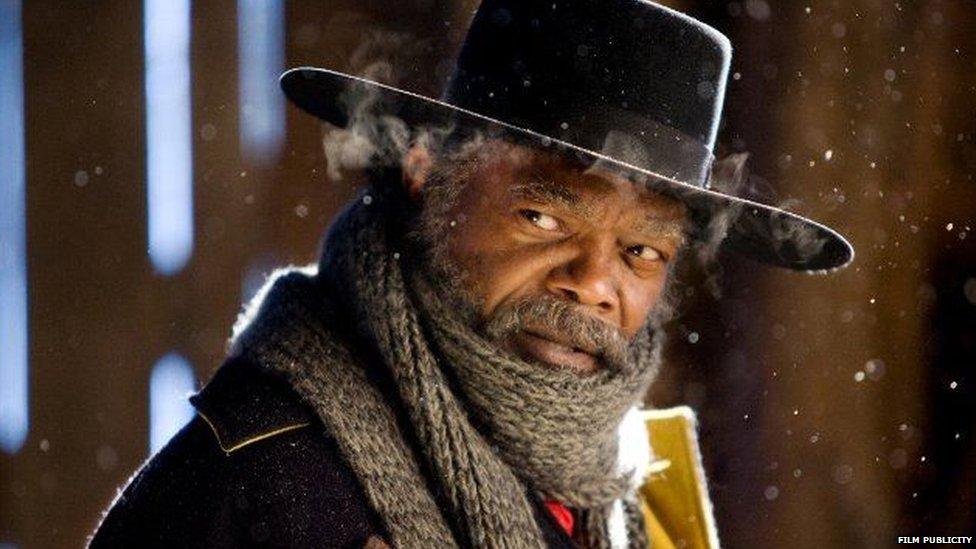
The Hateful Eight took cast members into real-life extreme situations
Other film-makers using techniques other than CGI, include Quentin Tarantino, who shot The Hateful Eight in what its star Samuel L Jackson called, in an interview with Collider, external, "a 30-degree refrigerated set" so that the cast's cold breath would look realistic.
Christopher Nolan used CGI on films like Interstellar and The Dark Knight Rises, but recently spoke to the Directors' Guild of America, external about "the absolute difference between animation and photography. I prefer films that feel more like real life, so any CGI has to be very carefully handled to fit into that".
Deakins is under no doubt why the popularity of CGI has risen. He said: "When you have so many films that seemingly put all their effort into bigger and 'better' action sequences, the over use of CGI becomes inevitable.
Old school options
"As CGI becomes ever cheaper it is inevitable that 'cinema' will move in that direction. Whether we should develop a new term for what are in essence animated films could be debated."
Actors, many used to performing against a green screen, are also speaking out. Tom Cruise told Extra, external he'd consider making Top Gun 2 as long as there was "no CGI on the jets".
Speaking about Lord of the Rings director Peter Jackson's use of CGI Viggo Mortensen told the Telegraph, external: "Whatever was subtle, in the first [Lord of the Rings] movie, gradually got lost in the second and third. Now with The Hobbit I and II, it's like that to the power of 10."
And while the Fast and Furious 7 used CGI to cover up the death of Paul Walker, external, old school options are being considered elsewhere. Philip Seymour Hoffman's untimely passing was explained in the latest Hunger Games film with a letter read out by Woody Harrelson's character, external.
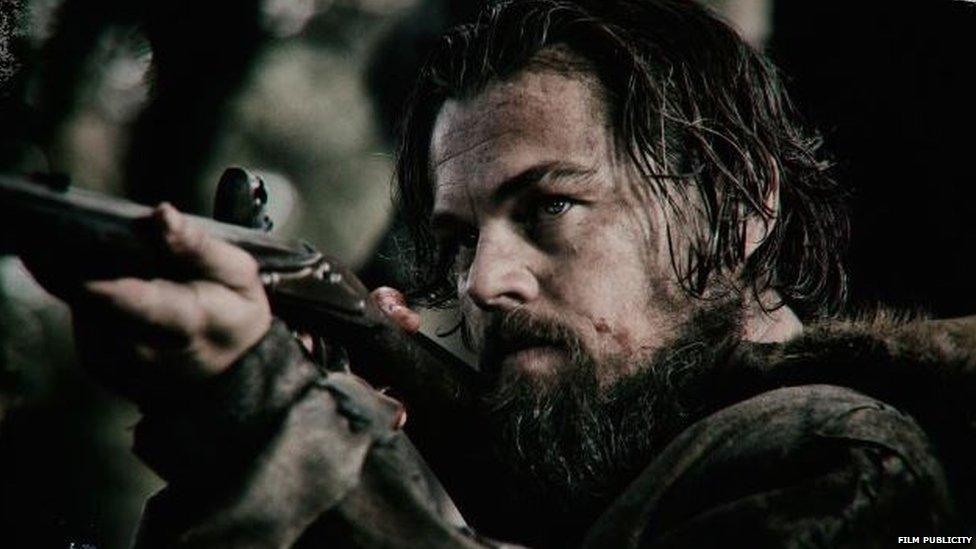
Conditions on the set of The Revenant were tough
By most accounts, the cast and crew of The Hateful Eight had it easy compared with those working on one of the most awaited films of 2016, The Revenant, director Alejandro Inarritu's follow-up to Birdman.
Birdman relied on computers to generate imagery around Michael Keaton's central character, but The Revenant was filmed in anti-social hours in Alberta, Calgary and southern Argentina, to preserve Inarritu's vision. Hollywood Reporter quoted a crew member as saying, external conditions were "a living hell".
Critics have saluted his courage, which slightly depresses Falk, who points out technology will have been involved.
"Inarritu is lauded for authenticity and cited as someone doing things a director has never done before simply because he shot a wilderness movie in the wilderness rather than created it on a soundstage and added in computer cold breath in post-production.
"Remember a lot of that is part of a PR narrative. It's not like they all stood around in bearskins behind the camera hunting their own food. I'm pretty sure they had a tea urn..."
'Less is more'
The most-talked about scene involves an attack on Leonardo DiCaprio's character by a bear. It's not yet clear what technology was involved.
"CGI is an amazing tool and a great asset for any visual 'storyteller'," argues Deakins. "Any technique that enlarges our 'canvas' is to be celebrated but, as with anything else, it is all about how it is used."
But Inarritu told Hollywood Reporter that CGI was "exactly what I didn't want" for the film.
"If we ended up in greenscreen with coffee and everybody having a good time, everybody will be happy, but most likely the film would be..." and a this point he used an expletive.
"When you see the film, you will see the scale of it," he said, adding Revenant is about survival, and the actors and crew benefited from having to make it in nature.
Inarritu, like the directors of the new Star Wars movies and many other film-makers, has clearly decided less is more.
- Published15 December 2015
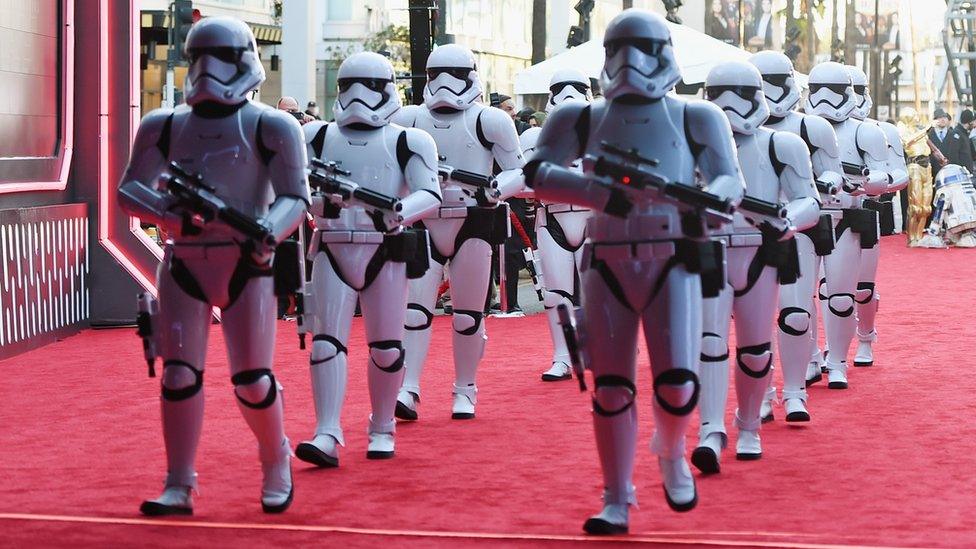
- Published14 December 2015
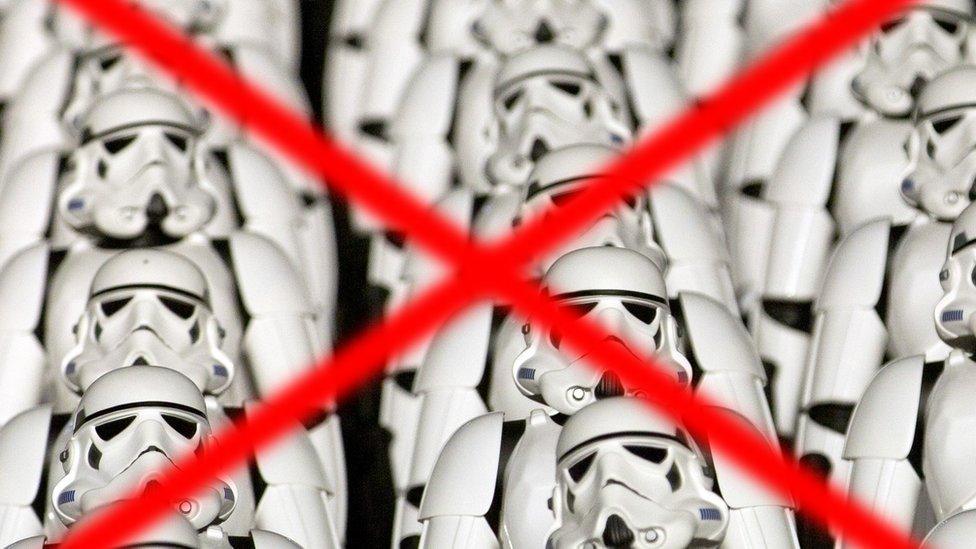
- Published14 December 2015
